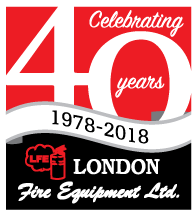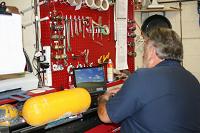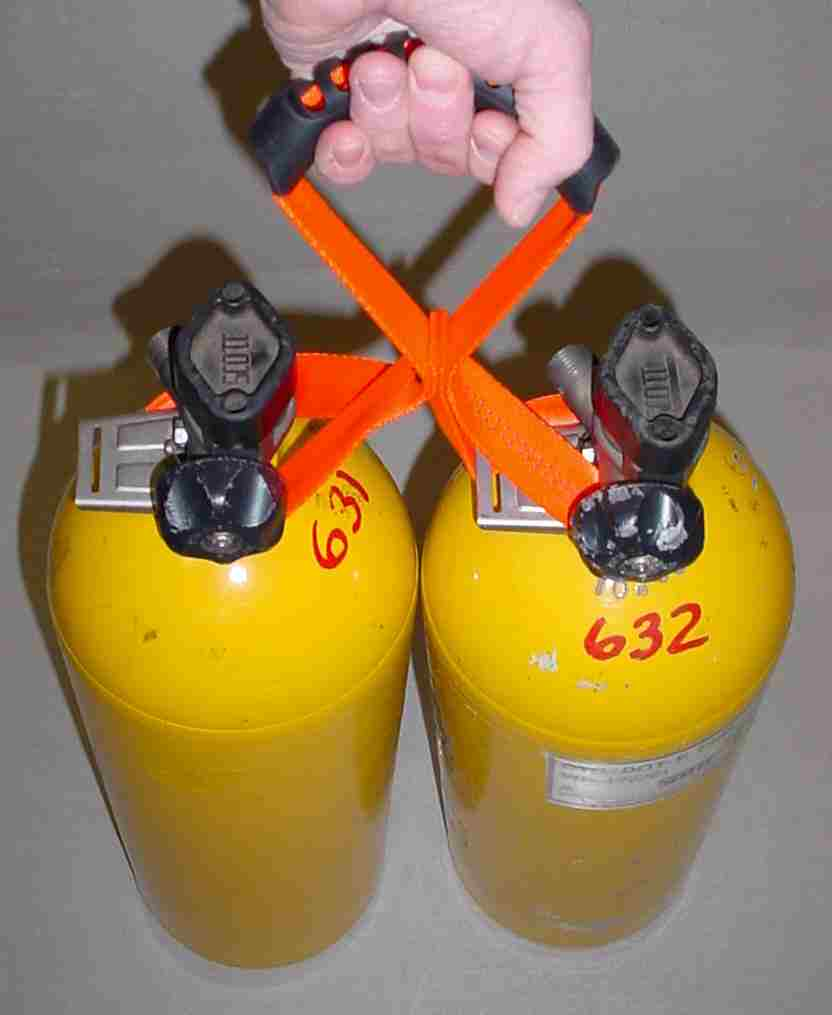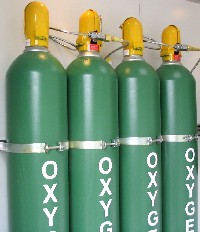London Fire Equipment Ltd is a Transport Canada Registered Cylinder Requalifier, we are authorized to requalify the following types of cylinders with test pressures below 7500 Psi.
- Scuba
- SCBA
- Medical Oxygen
- Industrial Oxygen
- Carbon Dioxide (up to 100lb capacity)
- Nitrogen
- Wet / Dry chemical 4B (Kitchen Hood / Industrial Systems)
All the above cylinders must be requalified periodically in compliance with Transport Canada, CSA and CGA Standards.
The cylinder requalification process always begins with a careful visual inspection of the cylinder inside and out. Our findings are documented and only after a satisfactory visual inspection, do we proceed to the Hydrostatic testing phase.
A cylinder is hydrostatic tested by filling it with water and installing the proper test adaptor in place of the cylinder valve. The cylinder is then placed inside a water jacket and pressure is applied to the cylinder by pumping additional water until the test pressure is reached.
As the cylinder increases in pressure it expands, this expansion can be measured by the amount of water displaced from the water jacket. After 30 seconds at test pressure, the total expansion is measured, then the pressure is slowly released and the cylinder will shrink back as the pressure drops. Once the pressure returns to zero, quite often the cylinder remains slightly larger than it was prior to the testing phase. This is known as permanent expansion.
In order for the cylinder to pass the hydrostatic test, the permanent expansion must not exceed 10% of the total expansion.
For Aluminum and Composite fibre- wrapped cylinders the maximum is 5%. TC-Metric Aluminum cylinders are allowed a 6% expansion. Acceptable cylinders are then stamped and data from each cylinder requalification is entered on our computerized database.
At this point, the requalification process is complete. For many cylinders they can be emptied, dried and returned to service.
Aluminum and composite cylinders used in scuba, scba or oxygen service may require an eddy current test after each Hydrostatic Test. Older aluminum cylinders manufactured prior to 1991 may have been manufactured from aluminum alloy 6391-T6 which is now known to be susceptible to sustained load cracking (SLC) in the interior neck and shoulder areas. Proper visual inspections and eddy current evaluations will reveal any cracks before they represent a serious safety risk to the fill station personel or the cylinder user.
The Department of Transportation (DOT) in the United States has mandated Eddy Current testing of aluminum alloy 6351-T6 cylinders used in Scuba, SCBA and Oxygen service at the time of the requalification effective January 1, 2007. Proper markings include the letters "VE" stamped after the Hydrostatic Test date.
The use of properly trained cylinder requalification personel is essential to ensure unsafe cylinders are removed from service. Designated London Fire Equipment employees are trained and certified in all aspects of cylinder requalification and Eddy Current testing.
Training certificates and copies of our Transport Canada permit are available upon request.
Various Eddy Current inspection equipment is available for inspection of the threads in aluminum and composite cylinders, we use the VisualPlus 3 system by Advanced Inspection Technology, currently this is the only equipment authorized by Luxfer for use on both 6351-T6 and 6061 aluminum alloy cylinders.
Recharging & Hydrostatic Testing
All stored pressure and cartridge operated fire extinguishers need recharging and hydrostatic testing at periodic intervals as required in the standard for portable fire extinguishers (NFPAIO).
Recharging is the replacement or replenishment of all extinguisher agent and expellant for most types of extinguishers. Stored pressure dry chemical extinguishers require recharging every 6 years.
Carbon Dioxide, water and wet chemical extinguishers need recharging after a hydrostatic test every 5 years. Stored pressure, cartridge operated and wheeled dry chemical extinguishers need recharging after hydrostatic testing every 12 years. Hose assemblies on cartridge operated extinguishers as well as wheeled fire extinguishers must also be hydrostatic tested every 12 years. The following table will help summarize the requirements.
Recharging & Hydrostatic Testing Intervals (Years)
| Extinguisher Type |
Recharge Interval (Yrs) |
Hydrostatic Test Interval (Yrs) |
| |
|
|
Stored Pressure Dry Chem. |
6 |
12 |
Cartridge Operated Dry Chem. |
12 |
12* |
Wheeled Dry Chemical |
12 |
12* |
Carbon Dioxide |
5 |
5 |
Water, Foam, Wet Chem. |
5 |
5 |
Clean Agents,FE36, Halotron |
6 |
12 |
| |
|
|
* Includes Hydrostatic Testing of Hose Assembly
|
Our full service Recharge and Hydrostatic testing facility is equipped to provide all of the above Hydrostatic testing and recharging with prompt, professional service at very competitive rates. Call London Fire Equipment Ltd today at 519-652-6913 or toll free at 1-800-403-9690
To learn more about cylinder safety, please check out the following links or email your questions to londonfire.equipment@bellnet.ca
Links:






